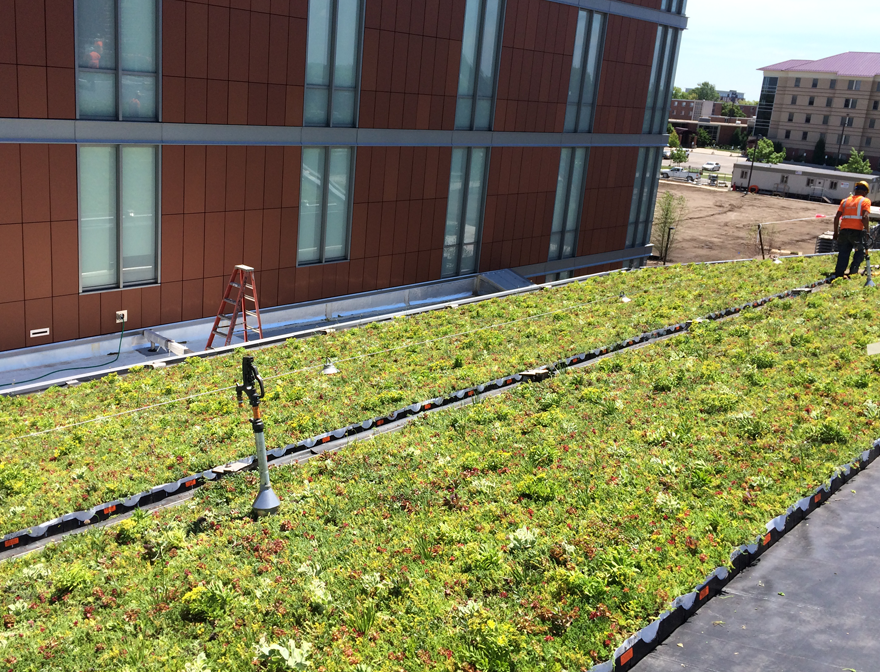by Brianna Crandall — September 9, 2016 — A 6,700-square-foot LiveRoof green roof was recently selected to be installed on the new Biosciences Building at Central Michigan University. The green roof is intended to provide a natural complement and visual link to the groundbreaking human and environmental health research conducted by CMU faculty and students inside. The building is scheduled to be completed in September, and classes in the facility will start in January 2017.
Biosciences Building
The 170,000-square-foot Biosciences Building will host a plethora of “bright, breathable” science labs, a 112-person-capacity active-learning classroom, offices, and numerous flexible student study, collaboration and meeting spaces. The research conducted in the Biosciences Building will allow the university to continue to establish itself as a leader in human and environmental health. The $95 million Biosciences Building is the largest capital project in CMU’s history, with funds coming from the State of Michigan, CMU internal reserves, contributions and proceeds from the issuance of bonds.

The 6,700 sq. ft. LiveRoof installed on the new Biosciences Building is a subterranean modular system that delivers a fully grown carpet of custom-mix, draught-tolerant sedums providing four seasons of color and function, with numerous benefits.
“The Biosciences Building interior features abundant daylight, natural wood paneling and other sustainable materials [that] connect this building to its mission and work,” says Steve Lawrence, associate vice president for facilities management at CMU. “The LiveRoof green roof and accompanying LiveWall, located inside the building, provide students and staff access to plants, natural views and daylight.”
LiveRoof green roof
LiveRoof is a patented, subterranean modular system that unites soil and plants, creating a beautiful, meadow-like aesthetic. The installation delivers a fully grown carpet of custom-mix, draught-tolerant sedums providing four seasons of color and function. LiveRoof notes that green roofs provide numerous significant environmental benefits:
- Reduce stormwater runoff by 50%–90%
- Lower interior sound levels by as much as 40 decibels
- Improve air filtration; one square foot of green roof can filter seven ounces of dust and smog per year. Plant photosynthesis also reduces greenhouse gases in the air
- Increase roof life; soil and plants provide a protective barrier, along with a waterproof roof lining, to extend roof life by as much as 200%–300%.
Green roof owners can also expect to mitigate the urban heat island effect while reaping energy conservation value and gaining habitable space when including patios, walkways and seating in the rooftop garden design.
A planted roof also provides financial benefits including: energy conservation and conservation of municipal septic systems. Green builders and remodelers can expect 10%–19% higher return on investment (ROI) and as much as 10% increased building value, while enjoying a marked reduction (up to 14%) in building operating costs.
For more information on the LiveRoof green roof, visit the company’s Web site.





